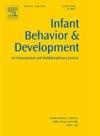Infant long-term memory: The last quarter century and the next
IF 2
3区 心理学
Q3 PSYCHOLOGY, DEVELOPMENTAL
引用次数: 0
Abstract
Over the last quarter century, research on infant long-term memory has explored the complex, nuanced ways infants remember and how early memories shape interactions with the world. Pioneering investigations in the 1950s and 1960s revolutionized the study of infant cognition and memory. By 2000, foundational properties of infant memory were established via preferential looking, imitation, and operant conditioning paradigms. In the years since, research has advanced understanding of how infants encode, consolidate, and retrieve information across diverse situations. This body of work has revealed that infants possess memory capacities once thought to emerge later in development and that experience shapes both the duration and flexibility of memory. Systematic investigations of reminders have established the necessary and sufficient conditions for retrieval, emphasizing the roles of context, cue, and timing. Advances in behavioral and neuroimaging research, including sleep-based paradigms, have provided insights into memory consolidation during infancy. Recent studies have also broadened the scope of inquiry to include early learning and retention across various media, such as picture books, television, and touchscreens. However, debate continues regarding the nature of infant memory and whether different types of memory follow distinct developmental trajectories. This review outlines future research directions, including how intertwined learning, memory, and attention processes influence one another and are shaped by the dynamic and evolving niches that infants inhabit. Despite major progress, important questions remain unresolved, including the characterization and fate of our earliest memories.
婴儿长期记忆:过去四分之一个世纪和下一个世纪。
在过去的四分之一世纪里,对婴儿长期记忆的研究探索了婴儿复杂而微妙的记忆方式,以及早期记忆如何塑造与世界的互动。20世纪50年代和60年代的开创性研究彻底改变了婴儿认知和记忆的研究。到2000年,婴儿记忆的基本特性通过优先观察、模仿和操作性条件反射范式得以确立。从那以后的几年里,研究对婴儿如何在不同情况下编码、巩固和检索信息有了更深入的了解。这些研究表明,婴儿拥有的记忆能力曾经被认为是在发育的后期才会显现出来,而经历塑造了记忆的持续时间和灵活性。系统地研究提醒建立了检索的必要和充分条件,强调了上下文、线索和时间的作用。行为和神经成像研究的进步,包括基于睡眠的范式,为婴儿时期的记忆巩固提供了见解。最近的研究还扩大了调查的范围,包括各种媒体的早期学习和记忆,如图画书、电视和触摸屏。然而,关于婴儿记忆的本质以及不同类型的记忆是否遵循不同的发展轨迹的争论仍在继续。这篇综述概述了未来的研究方向,包括学习、记忆和注意力过程是如何相互影响的,以及婴儿所处的动态和不断发展的生态位是如何塑造的。尽管取得了重大进展,但重要的问题仍未得到解决,包括我们最早的记忆的特征和命运。
本文章由计算机程序翻译,如有差异,请以英文原文为准。
求助全文
约1分钟内获得全文
求助全文
来源期刊

Infant Behavior & Development
PSYCHOLOGY, DEVELOPMENTAL-
CiteScore
4.10
自引率
4.80%
发文量
94
期刊介绍:
Infant Behavior & Development publishes empirical (fundamental and clinical), theoretical, methodological and review papers. Brief reports dealing with behavioral development during infancy (up to 3 years) will also be considered. Papers of an inter- and multidisciplinary nature, for example neuroscience, non-linear dynamics and modelling approaches, are particularly encouraged. Areas covered by the journal include cognitive development, emotional development, perception, perception-action coupling, motor development and socialisation.
 求助内容:
求助内容: 应助结果提醒方式:
应助结果提醒方式:


